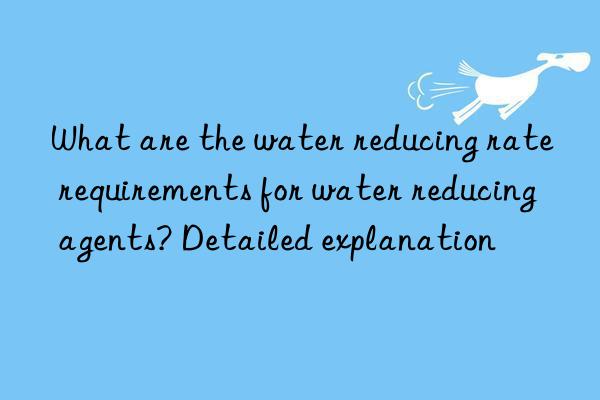
Concrete water-reducing agent has become an indispensable and important component in modern concrete. It is green and environmentally friendly and can improve the quality of concrete. Therefore, the quality of water-reducing agents has also become one of the key factors affecting the quality of concrete, and the water-reducing rate is the most critical technical parameter of concrete water-reducing agents and a key indicator for evaluating the performance and quality of water-reducing agent products.
How much do you know about water-reducing agents? When using them, there are certain requirements for its water-reducing rate. So what are the requirements for the water-reducing rate of water-reducing agents? Let’s take a look at it below:
The water reduction rate refers to the percentage of water consumption that can be reduced at a specified dosage. For example, it originally required 100 grams of water to stir the mortar out of the state. After adding the water-reducing agent with the specified output, 82 grams of water was used to stir the mortar out. The conclusion is that the water-reducing rate of this water-reducing agent at the specified output is 18%
So for example, if you tell Your water-reducing agent output should be 1.6 and the water-reducing rate should be 17%. Then you can get the actual water consumption by multiplying the original water consumption by (1-17%) when the output is 1.6.
The water-reducing agent is used on concrete. Widely used in all admixtures. Admixtures that can also improve various properties of concrete. When water reducing agent is added to concrete, it can reduce the water consumption per unit volume of concrete while maintaining fluidity. This is the basic property of concrete admixtures.
General manufacturers will provide the water-reducing rate of water-reducing agents. However, if the water-reducing agent is left for a long time, the water-reducing effect will be reduced. Moreover, the water-reducing rate issue is only obtained by the manufacturer under specific experiments. The result has a lot to do with other materials in the concrete mixing process, so you cannot rely on a specific value to perform calculations. It is best to do more experiments based on the values recommended by the manufacturer and continue to adjust, so that you can get the desired result. The result
Salt-based high-efficiency water-reducing agent is a polymer surfactant synthesized directly from organic chemical raw materials through graft copolymerization. It can not only be adsorbed on the surface of cement particles, but also make the surface of cement particles charged. They repel each other, and because of the steric hindrance of branched chains, they have a stronger and more lasting effect on cement dispersion. Therefore, salt-based water-reducing agents are considered to be the most efficient new generation of water-reducing agents.
We should understand the knowledge about the water-reducing rate of water-reducing agents so that we can use it better. This is the introduction to the above knowledge. </p

 微信扫一扫打赏
微信扫一扫打赏

